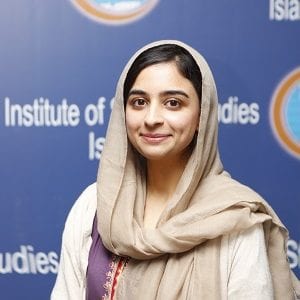On 19 May, 2023, Syrian President Bashar Al-Assad attended the Arab League Summit for the first time in over a decade. The re-coalescence of Syria back in the Arab fold is part of a broader regional normalisation process, which was brought about by Chinese facilitation on 10 March, 2023 between Saudi Arabia and Iran, where the two sides agreed to resume diplomatic relations; it is an open secret that their enmity has long been a cornerstone of Middle Eastern strife.
Since then, as part of the regional rapprochement, there have been visits between the high echelons of various countries with their Syrian counterparts; this includes, President Raisi’s visit to Damascus, Saudi Arabia’s Foreign Minister, Prince Faisal bin Farhan meeting with President Assad, as well as Syrian Foreign Minister Faisal Mekdad’s trip to Egypt after more than a decade.
In retrospect, the thread which ties these countries together is China, the bedrock being its billion dollar mega-project, the Belt and Road Initiative (BRI), which was initiated exactly ten years ago, in 2013. The BRI is predicated on enhancing connectivity and promoting economic cooperation among participating countries. The initiative consists of two main components: a land- based route and a maritime route. To date, the BRI is the most concrete example of Chinese implementation of South-South Cooperation (SSC), which is based on the principle of solidarity, mutual benefit and shared development objectives among partner countries. The central tenets of SSC are economic interdependence, self-reliance, mutual benefit, all postulated on equality and mutual respect for territorial integrity and national sovereignty.
![Aid for Syria should not be politicised to push for the rehabilitation of Assad - Cartoon [Sabaaneh/Middle East Monitor]](https://i0.wp.com/www.middleeastmonitor.com/wp-content/uploads/2023/02/IMG_6422-1.jpg?resize=500%2C333&ssl=1)
Aid for Syria should not be politicised to push for the rehabilitation of Assad – Cartoon [Sabaaneh/Middle East Monitor]
Similarly, the Middle East is of crucial importance due to its location at the crossroads of three major continents – Europe, Africa, and Asia – and the convergence of the Mediterranean Sea, the Red Sea, the Arabian Sea, the Caspian Sea and the Black Sea. Both China and the Middle East states have mutual interests in integrating the BRI into national regeneration schemes, such as Saudi Vision 2030, UAE Vision 2021, Jordan 2025, Turkiye’s Middle Corridor and Kuwait’s Vision 2035.
READ: Syria officials should be investigated for crimes against humanity, says HRW
In recent years, there has been a sharp increase in trade between China and the Middle East, especially in the energy sector which remains the substratum of China’s associations with the region. China has also signed comprehensive strategic partnership agreements with a number of countries, such as with Egypt (2014), Saudi Arabia (2016) and Iran (2021). In 2022, Syria, too, came under the BRI fold. Arab countries have expressed their support for Chinese initiatives on numerous occasions, the most recent being joint statements signed at the China-Arab States Summit and China-Gulf Summit in December 2022.
Here, it is important to note that, even though Syria became a BRI partner in 2022, the prevailing unrest in the country threatened to upend any chances of progress. In this context, China sought to mediate and promote peaceful resolutions, ensuring the advancement of its projects while fostering stability and prosperity in the region. Through active engagement in diplomatic efforts, China is managing to (successfully) navigate the complexities of the region, paving the way for successful BRI implementation and contributing to the overall development and well-being of the Middle East.
Chinese global strides have not gone unnoticed by the US. In 2020, it introduced the Caesar Act, which entailed that any country directly or indirectly engaging with Syria would be sanctioned. The following year, President Joe Biden unveiled the Build Back Better World (B3W) initiative at the G7 summit. The following year, it was renamed the Partnership for Global Infrastructure and Investment. Although this has not been explicitly stated, the B3W manifesto signals to the project being in direct opposition to the BRI.
OPINION: Bringing Assad back into the League of Shame does nothing for Arab unity
Moreover, what has furthered Middle Eastern states’ inclination towards China is a growing frustration with the United States’ fluctuating priorities and inconsistent engagement with the region as a whole. Another precursor for the need to enter into more pragmatic agreements has been the global financial crunch (underpinned by the Covid 19 pandemic) and the fuel crisis, exacerbated by the Russia-Ukraine standoff.
Nonetheless, Middle Eastern nations do not perceive regional developments in a binary fashion. Numerous Arab states adopt a more pragmatic approach based on national interests. Instead of pursuing alignment with a single great power, they want to participate in the multilateral arrangements directed by Washington and Beijing. All these countries list China as their largest trading partner and the United States as their strategic partner.
Hence, while Washington still maintains a significant military presence in almost every Middle Eastern country, Gulf States have responded to the changing geopolitical landscape, by engaging in long-standing strategic relationships with Western countries, while increasingly coexisting with their growing economic and energy ties with Beijing.
The views expressed in this article belong to the author and do not necessarily reflect the editorial policy of Middle East Monitor.

![Saudi Arabian Crown Prince Mohammed bin Salman (L) greets the head of Syrian regime Bashar Al Assad (R), ahead of the 32nd Arab League Summit in Jeddah, Saudi Arabia on May 19, 2023 [Royal Court of Saudi Arabia/Anadolu Agency]](https://i0.wp.com/www.middleeastmonitor.com/wp-content/uploads/2023/05/AA-20230519-31180807-31180781-32ND_ARAB_LEAGUE_SUMMIT_IN_SAUDI_ARABIA-e1684851491366.jpg?fit=920%2C614&ssl=1)







